Corynactis Quest: Dive #1 in the French Mediterranean
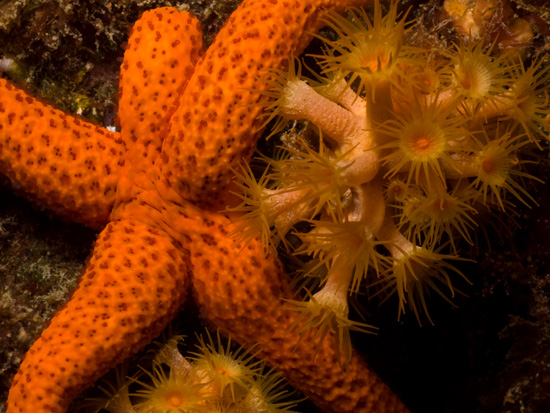
Echinaster sepositus sea star with Parazoanthus axinellae zoanthids.
From June 1-9 I was in France on a a two-fold mission. The first half of the trip was spent in the south of France in Marseille and the surrounding area. I stayed with my good friend Yvan Perez, a professor at the Institute of Mediterranean Ecology and Paleo-Ecology at the University of Provence in Marseille. Yvan acted as my dive guide and translator as we searched along the coast for the temperate Eastern Atlantic/Mediterranean corallimorph Corynactis viridis.
The second half of the trip was spent in Strasbourg in the Alsace region of France near the German border where I gave a lecture on the Caribbean corallimorph species at the annual convention of Recif France, which is the society of French reef aquarists. Over the next couple of weeks I will be posting a series of articles on this trip, specifically the quest for Corynactis viridis…
On the second day following my arrival we headed out for the first dive in hopes of finding Corynactis viridis. Yvan has not yet come across this species near Marseille (C. viridis are much less abundant in the Mediterranean than along the European Atlantic coast), but suggested we try this dive site due to its vertical rock walls, abundance of filter feeding anthozoans such as Parazoanthus axinellae zoanthids and gorgonians, and easy access from shore.
Here is a view from Google Earth of the Mediterranean coast of France with the yellow arrow showing the location of the dive:
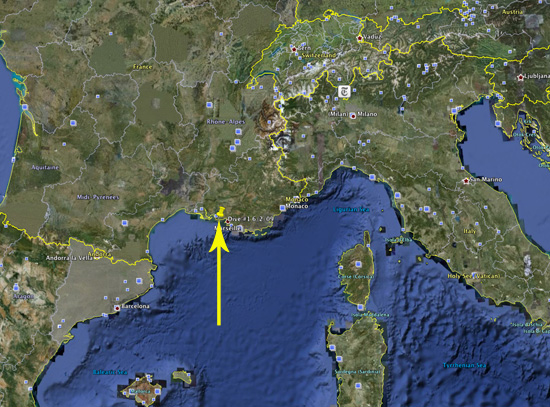
The dive site couldn’t have been located in a more convenient (and beautiful) spot. As can be seen in the photo, there is a beach on a small cove near the road that skirts the coast. Entry is right off the beach, followed by swimming just outside of the cove, about 100 meters from shore on the west (right hand) side. I found it remarkable just how clear and blue the water is for being so near to the coast. If only the Florida Keys could be so lucky.
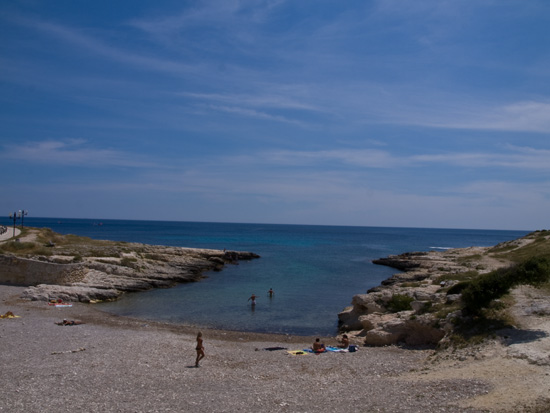
The dive site was only about 100m offshore of the right side of the cove.
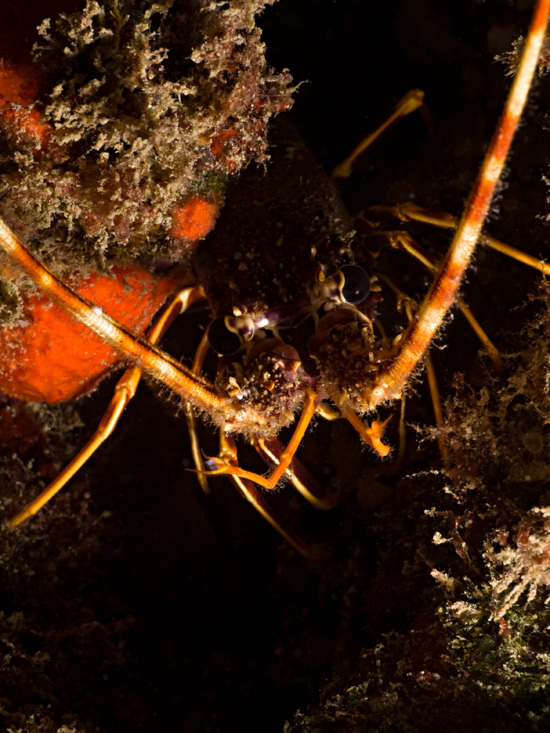
One of the first Mediterranean creatures to greet me was the commercially important Mediterranean lobster Panulirus elephas. According to Yvan, it is rare to see these lobsters in such shallow water, near to shore… as they are heavily hunted for their tasty tail meat.

There are a number of very interesting, and photogenic, species of blennies and triplefins in the Mediterranean. I was especially impressed with the males of the triplefin Tripterygion delaisi.
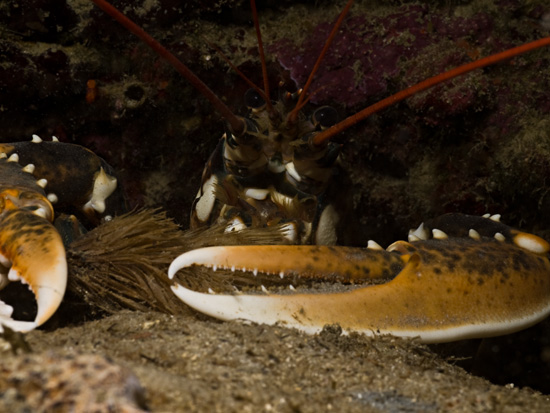
It is apparently quite a rare sight to see a European Lobster Homarus gammarus, in such shallow water (about 8 meters). This one was located in the farthest reaches of a cave that was undercutting a vertical wall.
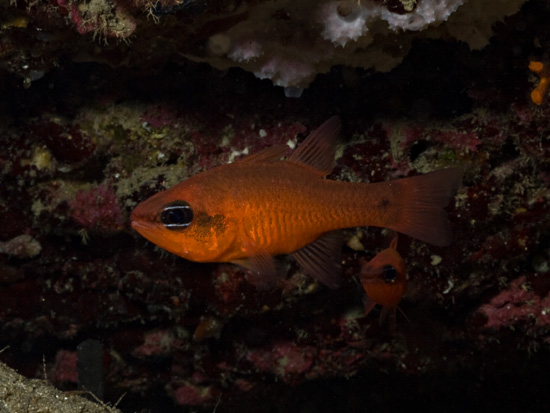
The Mediterranean hosts a surprisingly large number of species that belong to otherwise tropical genera. These cardinalfish, Apogon imberbis, are one such example. They were found in the back of the same cave where the European Lobster was found.
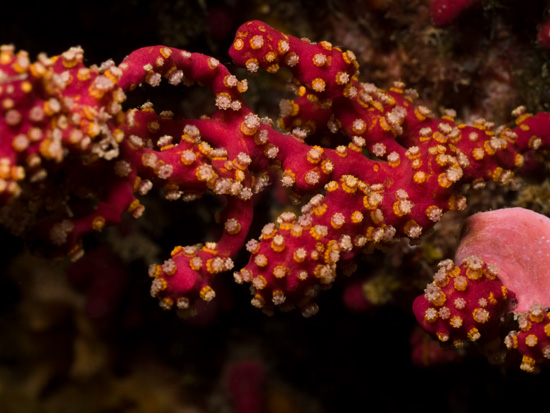
Parethrypodium coralloides is an encrusting Alcyonacean soft coral that often encrusts over gorgonians, which provide them with a convenient framework in which to feed for particulate matter in the water current. This is quite similar to its Caribbean relatives Erythopodium caribeorum and Briareum asbestinum that are also well known for their encrusting and gorgonian overgrowth strategies.
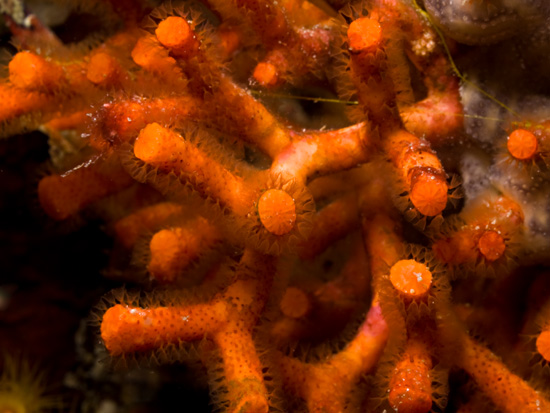
While looking very much like a true coral, this species Myriapora truncata is actually a bryozoan that forms hard branching colonies. The individual animal is known as a ‘zooid’, and each zooid has a ring of polyp-like tentacles that capture food particles. Unlike coral polyps, zooids have a complete digestive system with both a mouth and anus.
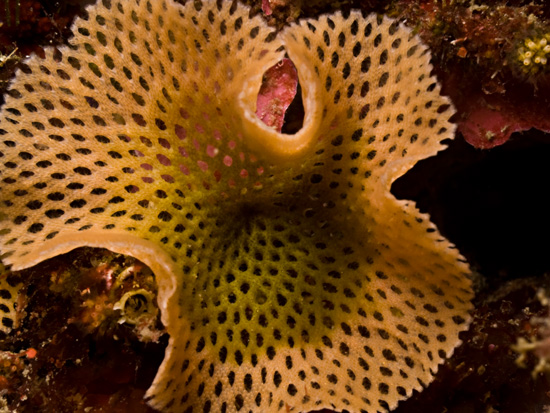
This is a lacy bryozoan; like corals, bryozoan species display a wide variety of growth patterns based on the repeated arrangement of individuals within the colony. Despite outward similarities in appearance and growth, corals and bryozoans are not closely related. However, they have adapted convergently to similar ecological niches.
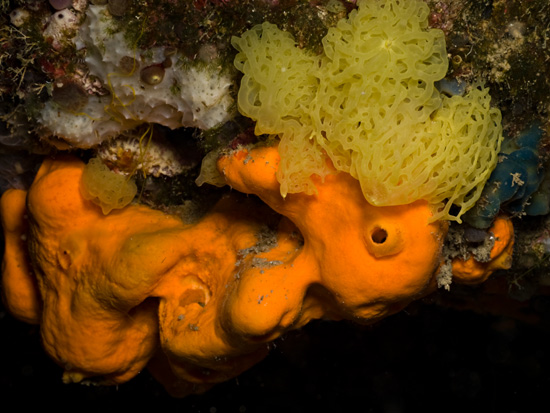
This assemblage of sponges is typical for the region. The yellow ‘swiss cheese’-like sponge is of the genus Clathria. Reef aquarists might recognize it based on its similarities to a tropical species that seems to sprout from nowhere and thrive in aquariums. Orange, Yellow, and Pink seemed to me to be the bright colors that dominated and defined the rocky substrate at this location.
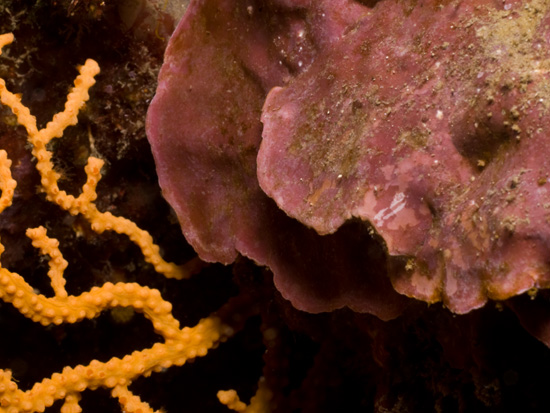
In addition to sponges (see photo above), the dive site was defined by an abundance of healthy plating pink coralline algae and gorgonians.
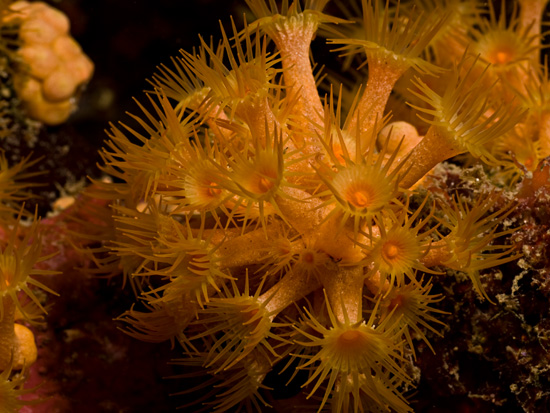
Clumps of these gorgeous plankton-feeding Parazoanthus axinellae dominated the vertical walls and undercuts.
So while the dive was extraordinarily interesting and produced a number of wonderful images, I was not successful in finding Corynactis viridis. It is probable that the waters are too clean and clear to satisfy these hungry planktivores. However, the sheer abundance of the ecologically similar Parazonthus axinellae confuses this hypothesis a bit. For the next dive site, we will choose a location that is a bit ‘dirtier’ in hopes of finding conditions that favor these corallimorphs.
This trip was made possible by a generous sponsorship from Two Little Fishies, makers of fine reef aquarium products.

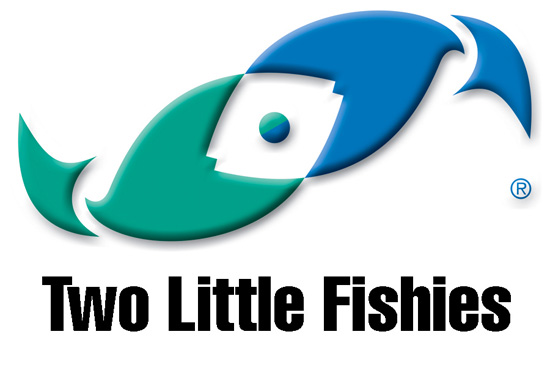
June 26th, 2009 at 10:16 am
[…] Colin of Coralmorphologic dives the French Mediterranean. […]